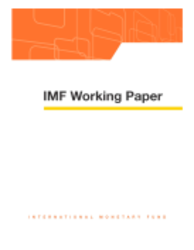
Trade and Domestic Financial Market Reform Under Political Uncertainty : Implications for Investment, Savings, and the Real Exchange Rate
This paper presents a model that incorporates uncertainty about trade reform and analyzes the effects of trade and financial liberalization on domestic investment and savings, the current account balance and the real exchange rate, both when the capital account is open and when it is closed. Under certain assumptions financial liberalization leads to a movement of resources in the opposite direction to that implied by trade liberalization and to real exchange rate appreciation, thus defeating one of the objectives of tariff reform, when the capital account is open. When political economy linkages are taken into account, however, the indirect effects of financial liberalization may offset the direct effects, encouraging a movement of resources in the desired direction. With a closed capital account these results should still hold unless there are strong negative income effects from trade reform.
Publication date: October 2000
ISBN: 9781451858747
$15.00
Add to Cart by clicking price of the language and format you'd like to purchase
Available Languages and Formats
| English |
Prices in red indicate formats that are not yet available but are forthcoming.
Topics covered in this book
This title contains information about the following subjects.
Click on a subject if you would like to see other titles with the same subjects.
Money and Monetary Policy , Money and Monetary Policy , International - Economics , International - Economics , uncertainty , political economy , financial liberalization , capital account , domestic savings , tariff reform , current account
Summary
Copyright © 2010 - 2025
Powered by:
AIDC



